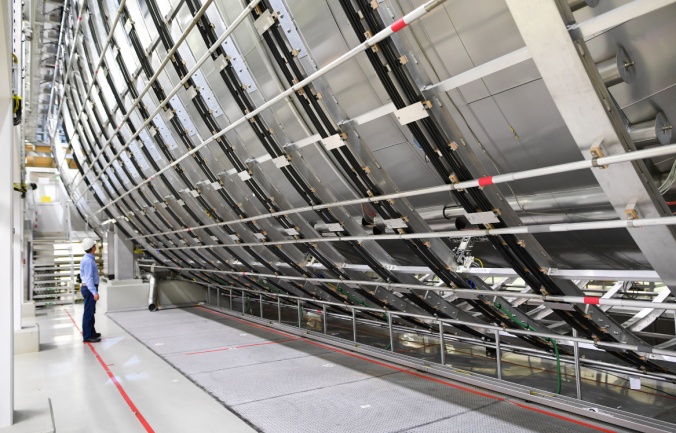
The first successful test of the neutrino project KATRIN
27. 10. 2016
Although neutrinos along with photons are probably the most numerous elementary particles in the universe, their rest mass remains unknown. Theorists have hypothesized for years that the rest mass of the neutrino is zero and measurements did not contradict this assumption. Later, however, experimentalist reliably demonstrated that neutrinos of different types transform among themselves. This discovery of neutrino oscillations, awarded by the Nobel Prize for physics in 2015, means that the mass of some neutrino states must differ from zero.
The measurement of neutrino mass has been striving for the third generation of experimental physicists. Up to now, only the upper limit of 2 eV was reliably established. The collaboration KATRIN (with the NPI ASCR physicists among the founding members) aims to increase tenfold the neutrino mass sensitivity. For this purpose the biggest electron spectrometer with gaseous source of molecular tritium was developed in the KIT (the Karlsruhe Institute of Technology). The whole equipment was tested on October 14, 2016 when the beam of photoelectrons past all parts from the source up to the detector. Superconducting magnets, vacuum systems and cryogenic apparatus worked reliably. Tests of a tritium part will follow and the start of the measurement of tritium beta-spectra is planned for autumn 2017. New data on the neutrino mass can be expected already in 2018. The full KATRIN sensitivity will require a five year measurement. Details can be found here.

The main spectrometer of the neutrino experiment KATRIN
Read also
- Martin Kákona Awarded Prestigious Fulbright–Masaryk Scholarship for Research with NASA and LBNL
- The Nuclear Physics Institute of the CAS celebrated its 70th anniversary
- The NPI stand at VědaFest broadcast live on Czech Television
- Second “Day with Theoretical Nuclear Physics” attracted students from across the country
- Martin Schäfer receives Otto Wichterle Award
- NPI organized the ReMade@ARI workshop, focusing on cutting-edge materials characterization and international collaboration
- NPI Co-Organized the 5th Meeting of the EIC International Financial Committee at BNL
- Radiocarbon Dating Reveals Gaps in Elephant Protection
- We are participating in two new projects focused on cosmic rays
- Roman Garba presented his research in Austria and the United Kingdom

